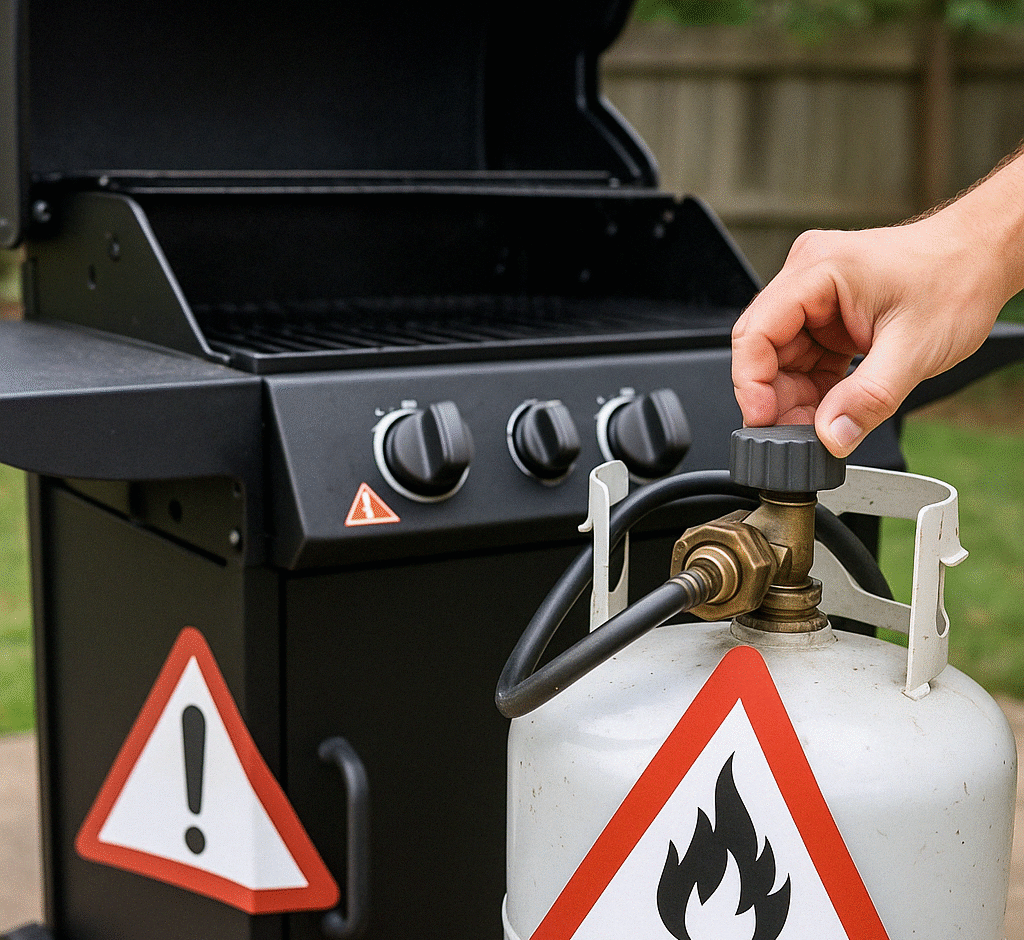
Don’t let a faulty propane hookup ruin your next BBQ. Learn how to safely use, store, and troubleshoot gas grills so you can cook with confidence.
Why Propane Safety Matters
Gas grills are incredibly convenient — fast start-up, consistent heat, easy cleanup. But that convenience comes with responsibility. Propane is highly flammable, and a small mistake can lead to dangerous leaks, flare-ups, or even explosions. Knowing how to properly handle propane tanks and gas connections is just as important as knowing how to cook a perfect steak.
Inspect Before You Ignite
Check the tank and hose before every cookout.
Here’s a quick inspection checklist:
- Look for cracks or signs of wear in the hose
- Make sure connections are tight but not overtightened
- Check the expiration date stamped on the propane tank (typically 12 years from manufacture)
- Ensure the regulator isn’t damaged or corroded
If something looks off — don’t light it.
Perform a Soap Test for Leaks
If you’ve ever smelled rotten eggs near your gas grill, that’s an emergency. Propane is naturally odorless, but companies add a strong sulfur-like scent to alert you to leaks.
Here’s how to do a quick leak test:
- Mix water with a few drops of dish soap
- Brush or spray it onto the hose and connections
- Turn on the propane (without lighting the grill)
- Look for bubbles — that means gas is escaping
If you find a leak, shut off the gas immediately and don’t use the grill until it’s fixed.
Connecting the Tank Safely
Always connect your tank by hand — never use tools that might overtighten or damage the threads.
- Make sure the burner knobs are in the OFF position
- Connect the hose securely to the tank valve
- Open the tank valve slowly — opening it too fast can cause a gas surge
If you hear hissing, smell gas, or feel air escaping, shut it all down.
Lighting Your Gas Grill the Right Way
Follow this sequence:
- Open the lid
- Turn the gas on at the tank
- Turn one burner knob to “ignite” or “start”
- Press the ignition button or use a long lighter
Never light a gas grill with the lid closed — doing so traps gas and can cause a fireball when it finally ignites.
If the grill doesn’t light in a few seconds, turn everything off, wait 5 minutes for the gas to clear, and try again.
Storage and Transport Tips
Do:
- Store propane tanks outside in an upright position
- Keep them away from heat sources, direct sun, and ignition sources
- Use a tank stabilizer or secure holder during transport
Don’t:
- Leave tanks in your car
- Store tanks indoors
- Roll tanks on their sides
Treat every propane tank like a live fire — it demands respect.
When to Replace a Propane Tank
If your tank is rusty, dented, expired, or won’t seal properly, swap it out. Most refill stations will take old tanks in exchange for a fresh one. Keep your receipt and check the valve each time you exchange.
Fire Extinguisher Bonus Tip
Keep a fire extinguisher nearby, preferably a Class B/C type. Know how to use it (remember PASS: Pull, Aim, Squeeze, Sweep), and don’t hesitate if something goes wrong.
Stay Cool While Running Hot
Propane grilling is fast and easy — just don’t get careless. By following these safety steps, you’ll protect your food, your guests, and your peace of mind. Gas grills give you precision and power, but only if you keep the flame — and the risks — under control.
